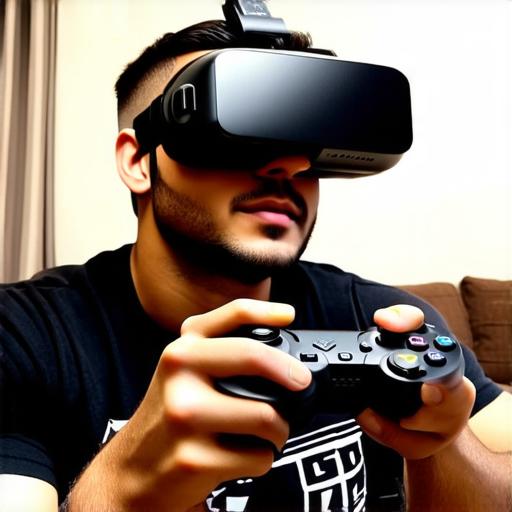As virtual reality (VR) technology continues to evolve and become more accessible, the purpose of VR headsets is becoming increasingly clear. VR headsets are designed to provide an immersive experience that allows users to enter a simulated environment and interact with it in real-time.
The Purpose of Virtual Reality Headsets: A Brief Overview
Virtual reality headsets are devices that allow users to experience a simulated environment in a way that feels real. They consist of a headset, sensors, and tracking technology that allows the device to track the user’s movements and adjust the simulated environment accordingly.
The purpose of VR headsets is to provide an immersive experience that allows users to feel like they are in a different world.
One of the main benefits of VR headsets is that they allow developers to create highly interactive experiences. With VR, users can interact with objects and environments in a way that was not possible before. For example, a user could explore a historical site or museum by wearing a VR headset and experiencing the environment as if they were really there.
The Purpose of Virtual Reality Headsets: Real-Life Examples
Virtual reality is being used in a wide range of industries to create engaging and interactive experiences for users. Here are some real-life examples of how VR headsets are being used:
- Gaming: VR headsets are becoming increasingly popular among gamers, who use them to experience games in a way that was not possible before.
- Education: VR headsets are being used in education to create immersive learning experiences. For example, a student could wear a VR headset and experience a historical event or scientific concept in a way that was not possible before.
- Training: VR headsets are being used for training in a variety of industries, including aviation, medicine, and military. For example, a pilot could wear a VR headset and experience flying a plane in a simulated environment to improve their skills.
- Architecture: VR headsets are being used by architects to create immersive experiences for clients. For example, a client could wear a VR headset and experience a building design as if they were really there.
- Tourism: VR headsets are being used in the tourism industry to allow users to experience travel destinations from the comfort of their own homes. For example, a user could wear a VR headset and virtually visit a destination like Paris or Tokyo without leaving their living room.
- Real Estate: VR headsets are being used by real estate agents to showcase properties in a more immersive way. For example, an agent could create a virtual tour of a property that allows users to explore the space as if they were really there.
The Purpose of Virtual Reality Headsets: How They Work
Virtual reality headsets work by tracking the user’s movements and adjusting the simulated environment accordingly. When a user wears a VR headset, sensors on the device track the user’s head movements and adjust the simulated environment to match those movements.
This allows the user to feel like they are in a different world and interact with objects and environments in a way that was not possible before.
One of the key components of VR headsets is the display. The display shows the simulated environment, which can be anything from a simple 2D image to a fully immersive 3D experience. The display is typically high-resolution and has a wide field of view, which allows users to see as much of the simulated environment as possible.
Another important component of VR headsets is the tracking system. The tracking system uses sensors on the device to track the user’s movements and adjust the simulated environment accordingly. There are several different types of tracking systems, including optical tracking, inertial tracking, and ultrasonic tracking.
The Purpose of Virtual Reality Headsets: Applications and Future Developments
Virtual reality headsets have a wide range of applications beyond gaming, education, and training. Here are some other potential uses for VR headsets:
- Healthcare: VR headsets could be used in healthcare to provide immersive therapy experiences for patients with conditions like PTSD or anxiety disorders. For example, a patient could experience a simulated environment that mimics their trigger and learn coping strategies in a safe and controlled environment.
- Therapy: VR headsets could also be used in physical therapy to provide more engaging and immersive experiences for patients recovering from injuries or surgeries. For example, a patient could practice walking or running in a virtual environment that simulates real-world scenarios.
- Entertainment: VR headsets are being developed for use in film and television production, allowing creators to create more immersive and interactive experiences for audiences. For example, a viewer could experience a movie in 3D or even participate in the story by making choices that affect the outcome.
- Education: VR headsets are also being used in education to provide more engaging and immersive learning experiences. For example, students could take virtual field trips to historical sites or explore scientific concepts in a more interactive way.
- Tourism: VR headsets could be used in the tourism industry to allow users to experience travel destinations in a more realistic way. For example, a user could virtually visit a museum or art gallery and learn about the history and context of the exhibits.

The future of virtual reality technology is likely to see continued advancements in display technology, tracking systems, and software development. This will allow developers to create even more immersive and interactive experiences for users across a wide range of industries.
